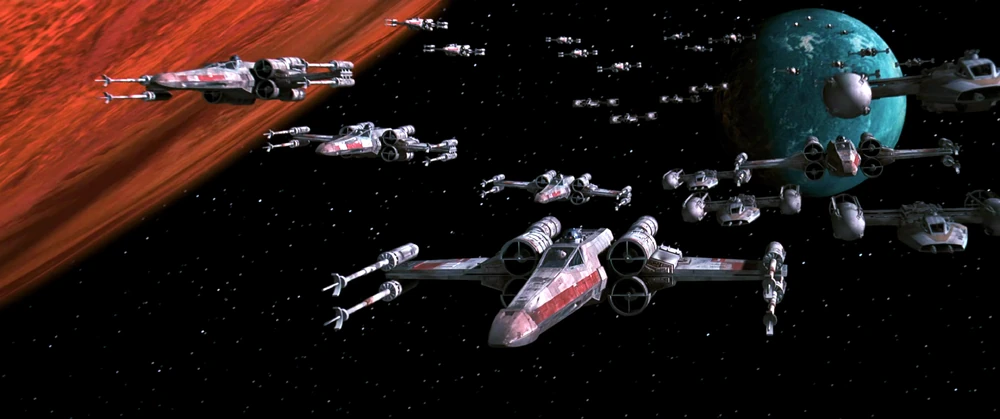When you think of Star Wars, epic battles, iconic characters, and a sprawling galaxy far, far away likely come to mind. But have you ever wondered how time is measured in this universe? In our galaxy, time is measured in days, weeks, and years based on Earth’s rotation and orbit. However, in Star Wars, they have their own unique system, known as the Galactic Standard Calendar. This article explores the concept of weeks in Star Wars, their significance, and how they compare to our earthly timekeeping.
Origins of the Weeks in Star Wars
Galactic Standard Calendar and BBY
The Galactic Standard Calendar is the backbone of timekeeping in the Star Wars universe. This calendar is not just a random construct; it is deeply integrated into the galaxy’s history and culture. It’s the calendar that ties the entire galaxy together, whether you’re on Coruscant, Tatooine, or the outer reaches of the Unknown Regions.
One of the most important aspects of this calendar is the dating system that revolves around the Battle of Yavin (BBY – Before the Battle of Yavin, and ABY – After the Battle of Yavin). This pivotal event in A New Hope, where the first Death Star was destroyed, serves as a reference point for everything that happens in the galaxy. It’s a timeline that fans can easily follow, allowing them to place events and stories in a clear chronological order.
Significance of the Battle of Yavin

The Battle of Yavin isn’t just a plot point; it’s a historical marker. Much like the way we refer to BC and AD on Earth, the Star Wars galaxy uses BBY and ABY to distinguish between different eras. This system provides context to the events, wars, and changes that the galaxy undergoes. The Battle of Yavin essentially resets the clock, dividing the timeline into a “before” and “after,” which helps both the characters in the universe and fans on Earth to keep track of the galaxy’s history.
Understanding the Galactic Standard Calendar
Structure of the Calendar
The Galactic Standard Calendar is unique. Unlike Earth’s Gregorian calendar, which consists of 365 days and 52 weeks, the Galactic Standard Year has 368 days. These days are divided into 10 months, and each week consists of 5 days. This structure reflects the diversity and vastness of the galaxy, where planets have different rotations and orbital periods. The Galactic Standard Calendar was created to standardise timekeeping across the galaxy, making it easier for people from different systems to interact and coordinate.
Weeks in the Galactic Calendar
A week in the Galactic Standard Calendar is shorter than an Earth week, consisting of just 5 days. These days are named:
This shorter week was designed to fit into the overall structure of the Galactic Standard Year, ensuring that the calendar is consistent and easy to follow across different systems. For those accustomed to Earth’s 7-day week, this might seem odd, but in the Star Wars universe, it’s just another example of how different and yet familiar the galaxy can be.
Chronological Events in the Galaxy
Timeline of Major Star Wars Events
Understanding how weeks and years are measured in Star Wars is crucial to placing major events within the galaxy’s timeline. From the Old Republic Era to the Clone Wars, and from the Rebellion against the Empire to the rise of the First Order, the Galactic Standard Calendar helps fans track these epic stories in a coherent timeline. For example, the Clone Wars, which spanned three years, or 780 standard days, can be better understood when we break them down into Galactic Standard weeks and months.
The Old Republic to the New Republic
The Star Wars timeline is rich with history. The Old Republic Era, known for its ancient Jedi and Sith conflicts, gives way to the rise of the Empire and the Clone Wars. These eras are marked by significant battles, political upheavals, and the shifting balance between the Light and Dark sides of the Force. By the time we reach the era of the New Republic, the calendar has seen countless events that have shaped the galaxy’s destiny. The concept of weeks and years in this timeline helps fans understand the duration and impact of these events.
Key Historic Conflicts
The Great Sith War and Jedi Civil War
The Great Sith War and Jedi Civil War are two of the most significant conflicts in the galaxy’s history. These wars, though spanning years, are broken down into weeks and months within the Galactic Standard Calendar. This breakdown helps us grasp the scale and duration of these wars, providing context to the battles that shaped the galaxy. The wars weren’t just fought over days or months; they were protracted struggles that defined eras and left lasting scars on the galaxy.
The Mandalorian Wars
The Mandalorian Wars, another pivotal conflict, also follow this structure. Understanding the weeks and months within this period helps in appreciating the long-term effects these wars had on the galaxy. The wars influenced everything from military strategies to political alliances, and their legacy is felt even in the later eras of the Star Wars timeline.
Cultural and Social Aspects
Life Day Celebrations
Life Day, a festive celebration originating from the Wookiee homeworld of Kashyyyk, is one of the most well-known holidays in the Star Wars universe. It’s celebrated once a year, but how does this fit into the Galactic Standard Calendar? Life Day falls within one of the festival weeks that are interspersed throughout the 368-day year. These weeks are similar to our holidays, offering a break from the regular calendar and a time for celebration and reflection. Life Day shows how cultural practices are woven into the fabric of the Galactic Standard Calendar, adding depth to the social and cultural life of the galaxy.
Frequently Asked Questions
What is the duration of a standard day in the Star Wars universe?
A standard day in Star Wars is 24 hours, much like on Earth. However, the length of weeks and years varies depending on the planetary system and the Galactic Standard Calendar.
How is a year measured in the Star Wars galaxy?
A Galactic Standard Year consists of 368 days. These are divided into 10 months, with weeks consisting of 5 days, and include additional festival weeks.
Can you list the names of the days and months as per the Star Wars calendar?
Some of the days include Primeday, Centaxday, Taungsday, Zhellday, and Benduday. The months are not fully detailed in the canon, but these days structure the 5-day week.
How does the Star Wars calendar differ from Earth’s calendar?
The Galactic Standard Calendar has 368 days, divided into 10 months, with 5-day weeks. It’s designed to standardise time across the galaxy’s diverse planetary systems, unlike Earth’s Gregorian calendar.









